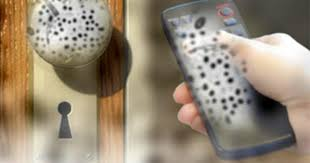Cleaning may seem like an easy task with little question as to how to do it properly. However, with the threat of COVID-19 still present, understanding some important facts can help keep you and your family safe. Therefore, we have put together some tips for keeping your home COVID clean.
Is it Clean, Sanitized, or Disinfected?
Many people will use these terms interchangeably, but there is a difference.
Cleaning removes germs, dirt, and impurities from surfaces or objects. Cleaning works by using soap and water to physically remove germs from surfaces. This process does not necessarily kill germs, but by removing them, it lowers their numbers and the risk of spreading infection. For example, washing your kitchen counter down with a soapy washcloth would be considered cleaning.
Sanitizing lowers the number of germs on surfaces or objects to a safe level, as judged by public health standards or requirements. You can do this by either cleaning or disinfecting something to lower the risk of spreading infection.
Disinfecting kills germs on surfaces or objects by using chemicals. Disinfecting does not necessarily clean dirty surfaces, but by killing the germs on a surface after cleaning, it can further lower the risk of spreading infection. For example, using an EPA-approved disinfectant to wipe down a toilet seat is considered disinfecting. You would not see any residue on the wipe afterwards, but the chemicals in the disinfectant have done their job.
How Do I Disinfect My Home for COVID-19?
The CDC recommends using soap and water first, to remove any dirt and debris, and then using a chemical that is EPA approved to kill the SARS-CoV-2 virus.
Using a disinfectant properly is surprisingly complex. Following the instructions for the disinfectant is very important. Each disinfectant has its own contact time, also known as the wet time. This is the time that the disinfectant needs to stay wet on a surface in order to ensure it will kill the targeted germs. The results of microbiological testing using EPA-approved methods determines the wet time. Contact times for disinfectants range from 15 seconds to 10 minutes. Contact times also differ for different microorganisms. For example, a commonly used cleaning product needs a wet time of 2 minutes to kill common flu viruses, 3 minutes to kill E. coli and 10 minutes for the SARS-CoV-2 virus. Disinfectant labels may not be updated to reflect wet times for the SARS-CoV-2 virus. You can search the manufacturer’s website or err on the side of caution and keep surfaces wet for 10 minutes.
Tips to Remember
- Clean with soap and water first
- Use a disinfectant approved by the EPA to kill the SARS-CoV-2 virus
- Follow directions for contact/wet time
The CDC also recommends cleaning “high touch” surfaces frequently. Some examples of high-touch surfaces include:

- Tables
- Doorknobs
- Light switches
- Countertops
- Handles
- Desks
- Phones
- Toilets
- Faucets
- Sinks
These high-touch surfaces can become contaminated by direct contact with bodily fluids or indirect contact with other contaminated objects, such as ineffectively cleaned sponges or poorly washed hands.
Laundry

Launder items according to the manufacturer’s instructions using the warmest appropriate water setting and dry items completely. Wear disposable gloves when handling dirty laundry from a person who is sick. It is okay to wash dirty laundry from a person who is sick with other people’s items. Do not shake dirty laundry; doing so can send germs from the laundry into the air. Don’t forget to clean and disinfect clothes hampers using an approved disinfectant.
How Can HomeSpark Help?
HomeSpark has taken the guesswork out of cleaning and disinfecting your home with our new COVID Clean service. We have done the research on EPA disinfectants, wet times, and best practices and have trained our caregivers on how to properly clean and disinfect to keep you and your loved ones safe. If you are interested in a COVID Clean for your home, call us for more details or contact HomeSpark.